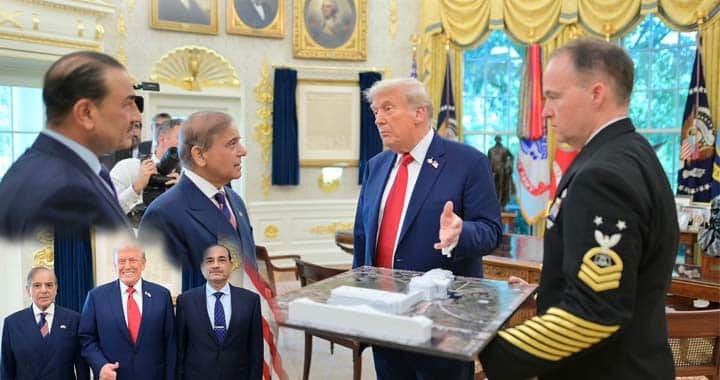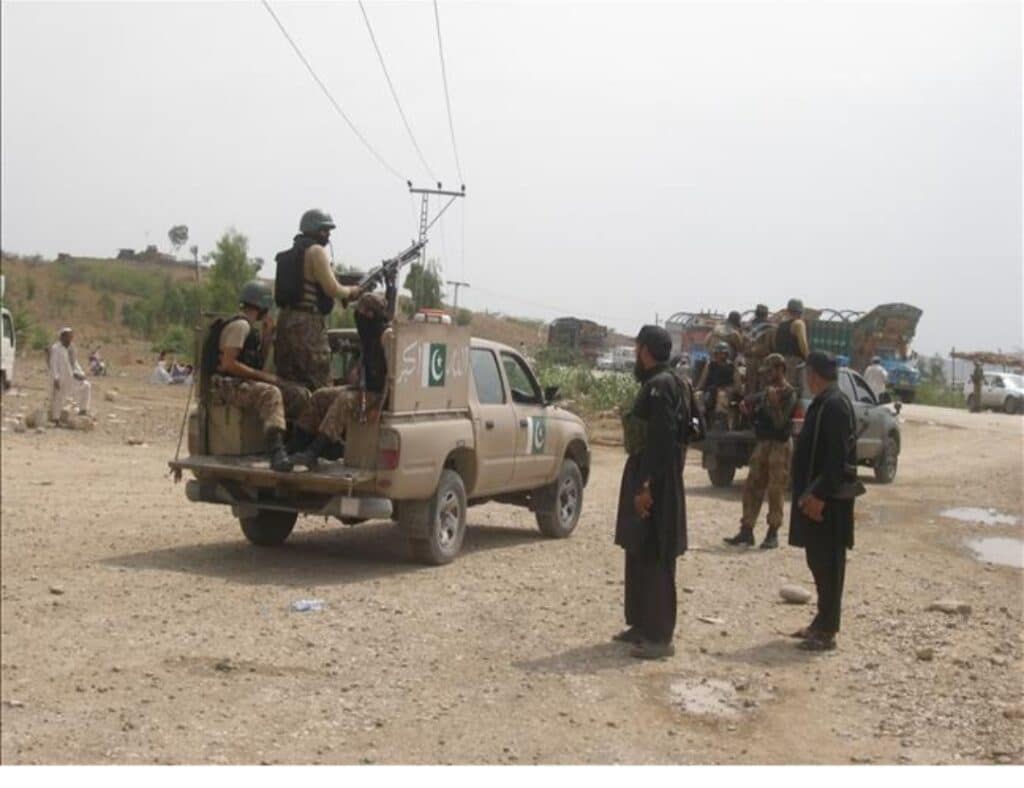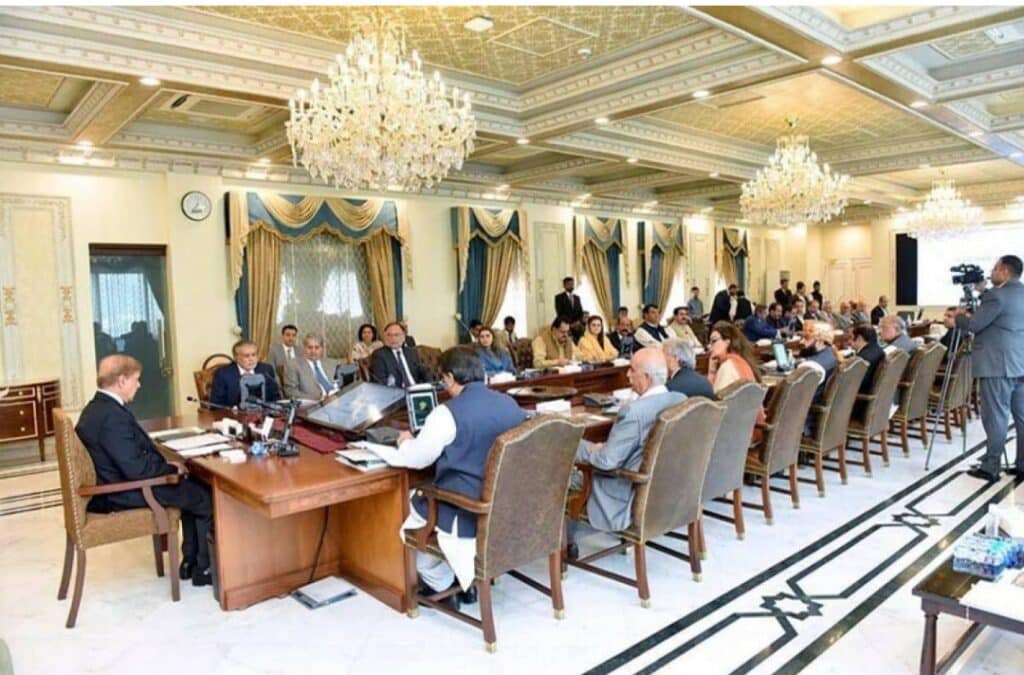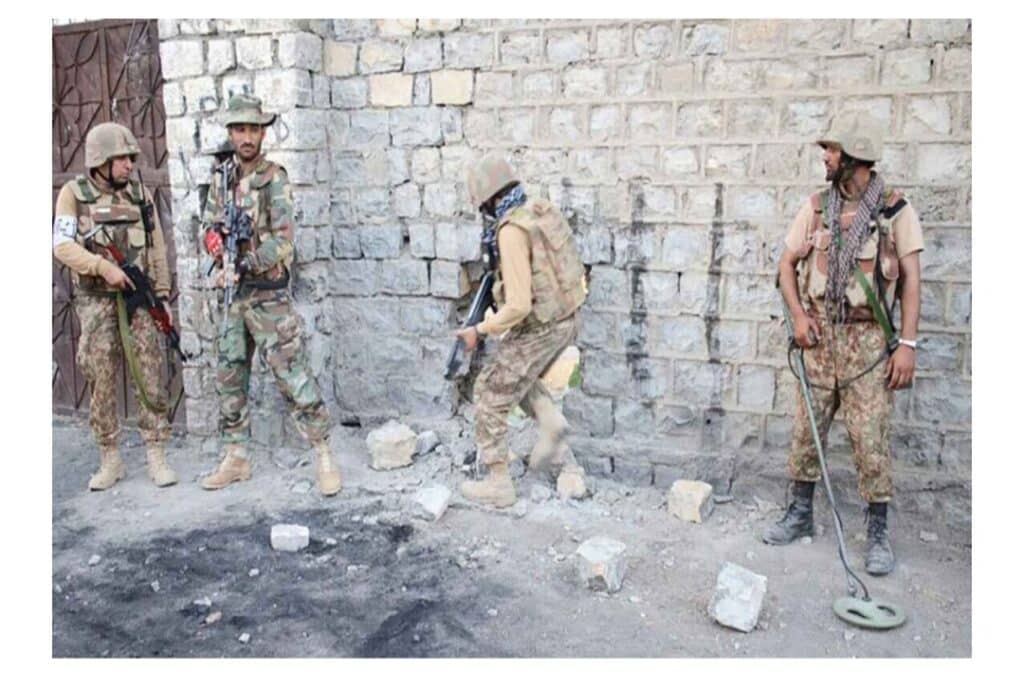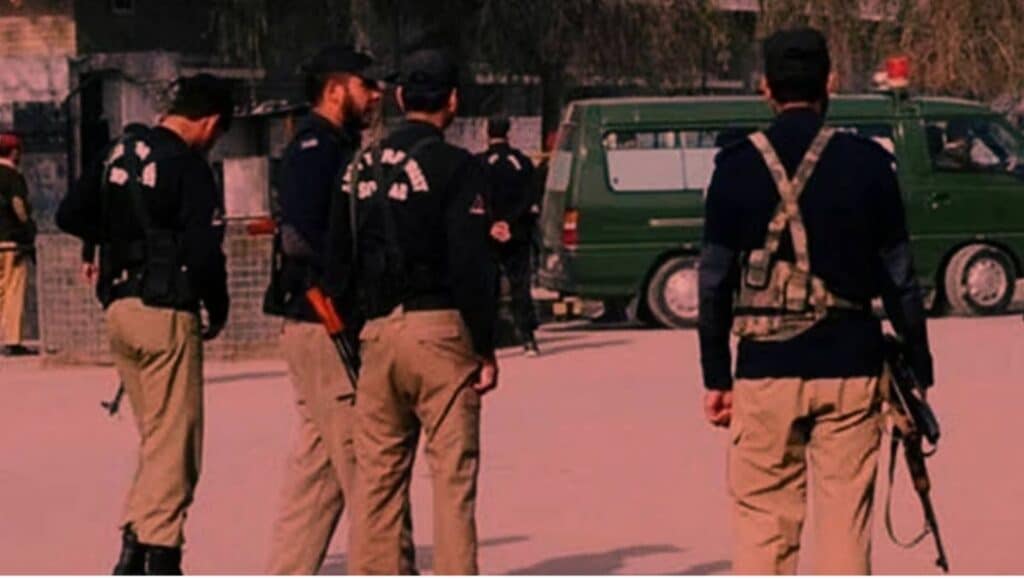Prime Minister of Pakistan, Muhammad Shehbaz Sharif, and Chief of Army Staff, Field Marshal Syed Asim Munir, concluded a high-level meeting today with U.S. President Donald J. Trump at the White House. This marks the first formal bilateral engagement between the two countries’ top civilian and military leaderships since President Trump’s return to office in January 2025.
The meeting, which lasted approximately one hour and twenty minutes, was held in the historic Oval Office. Scheduled for 4:30 PM (EDT) — 1:30 AM Pakistan Standard Time the talks began with a brief delay of 30 minutes as President Trump concluded prior engagements, including the signing of executive orders and a media interaction.
Also in attendance were U.S. Vice President J.D. Vance and Secretary of State Marco Rubio, underlining the strategic importance of the meeting.
Official White House press photographs showed Prime Minister Shehbaz Sharif and Field Marshal Syed Asim Munir in discussion with President Trump, as well as during a group photo where President Trump gave his signature “thumbs-up” gesture — a symbolic nod to the cordial atmosphere of the talks.
Prior to the meeting, President Trump told reporters:
“We are welcoming a great leader to the White House. The Prime Minister of Pakistan and the Field Marshal are both exceptional individuals.”
This meeting represents a significant diplomatic milestone, occurring more than six years after former Prime Minister Imran Khan’s historic visit to Washington in July 2019 during Trump’s first term.
Upon arrival at Joint Base Andrews, Prime Minister Shehbaz Sharif received a red-carpet welcome. He was greeted by senior officials of the U.S. Air Force. Field Marshal Syed Asim Munir accompanied the Prime Minister throughout the visit.
According to senior U.S. State Department officials, the relationship between Washington and Islamabad has witnessed a “measured warming” since the beginning of President Trump’s second term. In contrast to recent strains in U.S.-India relations — stemming from tariff disputes and immigration issues — Pakistan is emerging as a renewed focus in America’s strategic calculations in the region.
One official noted:
“Our relationship with Pakistan is not tied to our ties with India. It is independent and strategically vital.”
He highlighted significant U.S. investments in Pakistan’s mineral sector, valued in the hundreds of millions of dollars, and ongoing interest in petroleum exploration.
The same official confirmed that Washington is closely monitoring the recently signed Pakistan-Saudi Arabia defense pact, while also referencing a July 31st bilateral trade agreement under which the U.S. imposed a 19% tariff on certain Pakistani exports — a contrast to the lack of finalized trade arrangements with India at this time.
Observers suggest New Delhi has begun recalibrating its relations with China in response to growing tension with the U.S.
Earlier this year, in June 2025, Field Marshal Asim Munir became the first serving Pakistani military chief to be invited for a formal bilateral meeting at the White House. During that visit, he and President Trump held a detailed exchange on regional tensions, particularly emphasizing the importance of a peaceful resolution to the Iran-Israel conflict.
The Prime Minister’s current visit to the United States — characterized as “diplomatically intensive” — also included participation in the United Nations General Assembly, a key multilateral session of the Muslim bloc, and separate meetings with heads of international financial institutions in New York.
The Pakistani Embassy, the country’s Mission to the United Nations, and members of the Prime Minister’s media team had strongly anticipated this high-level engagement at the White House as a defining moment in the visit.

